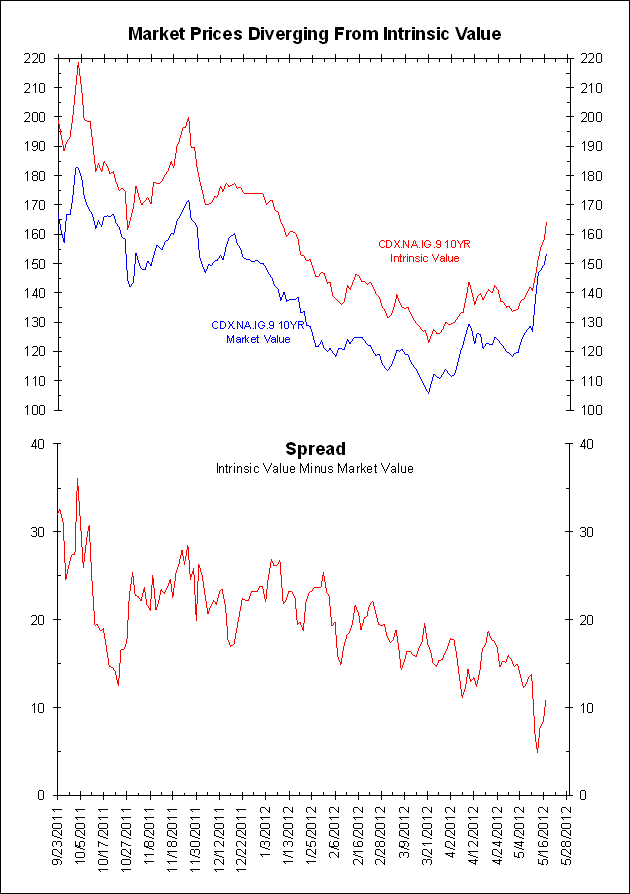The Financial Times – JPMorgan unit has $100bn of risky bonds
The unit at the centre of JPMorgan Chase’s $2bn trading loss has built up positions totalling more than $100bn in asset-backed securities and structured products – the complex, risky bonds at the centre of the financial crisis in 2008. These holdings are in addition to those in credit derivatives which led to the losses and have mired the bank in regulatory investigations and criticism. The unit, the chief investment office (CIO), has been the biggest buyer of European mortgage-backed bonds and other complex debt securities such as collateralised loan obligations in all markets for three years, more than a dozen senior traders and credit experts have told the Financial Times. The bank has said its derivative activities were intended primarily to help balance risks on its overall balance sheet, but the revelation that it has built up other large, risky positions is likely to raise further questions about the CIO’s remit.
The Wall Street Journal – Inside J.P. Morgan’s Blunder
CEO Dimon Blessed the Concept Behind Disastrous Trades; ‘Blood in the Water’
On April 30, associates who were gathered in a conference room handed Mr. Dimon summaries and analyses of the losses. But there were no details about the trades themselves. “I want to see the positions!” he barked, throwing down the papers, according to attendees. “Now! I want to see everything!” When Mr. Dimon saw the numbers, these people say, he couldn’t breathe. Those trading positions have produced losses that could total as much as $5 billion, tarnishing the record of an executive who had thrived through the global financial crisis and who has long been known for paying close attention to the bank’s trading activity, its risk profile and the activities of its senior employees. J.P. Morgan, the nation’s largest financial firm by assets, is struggling to contain the damage, which already has shaved off more than $25 billion in shareholder value.
Comment
The press is finally figuring out J.P. Morgan’s position are still open and they are subject to more losses. We noted this on Tuesday in a post titled “How Jamie Dimon Might Lose His Job This Summer“:
Four days after the announcement of the loss by J.P. Morgan and we get the sense that most still do not understand what happened. The stories above are typical examples of this. Until these losses are better understood, those that do not understand are going to be shocked in the months ahead by the continued “surprises” in this story and may eventually call for Dimon to be replaced.
So what exactly is being misunderstood in this story? Namely, the positions that J.P. Morgan lost money on are still open and could grow many times over. They are still open because they are so large J.P. Morgan cannot find counter-parties to close them. Instead, the story above writes about these losses as if they are a one-time loss and the positions are already closed.
J.P. Morgan’s stock performed poorly again yesterday presumably because this position continues to move against them:
Zero Hedge (blog) – It’s Not Over Yet For JPM
IG9 10Y spreads re-surged today and were very choppy into the close as they broke back above 155bps (at 155.5/157.5bps now) for the first time since Mid-December with a 31% rip in the last two weeks. This fits perfectly with our ongoing thesis of this being a tail-risk hedge (not a simple ‘spread’ as other ignorant commentators presume) whose risk management has exploded in their face. While the skew (the difference between the index and its portfolio fair-value) has collapsed and arbs will be happy and likely exiting – the same correlation shifts (that we discussed earlier) that drove the big bank to sell more and more protection into a spread compressing market are now back-firing as systemic risk re-surges and the correlation shift is forcing them to buy back more and more protection into a spread decompressing market. Oh the fun of negative convexity – especially when you ARE the market and there is no-one to unwind the actual tranches to. While we among others expected the selling to slow as the skew collapsed, the secondary effect of the actual rise in systemic risk is now taking over and forces the bank to buy protection back into a rising spread market…
Source: Bianco Research



What's been said:
Discussions found on the web: